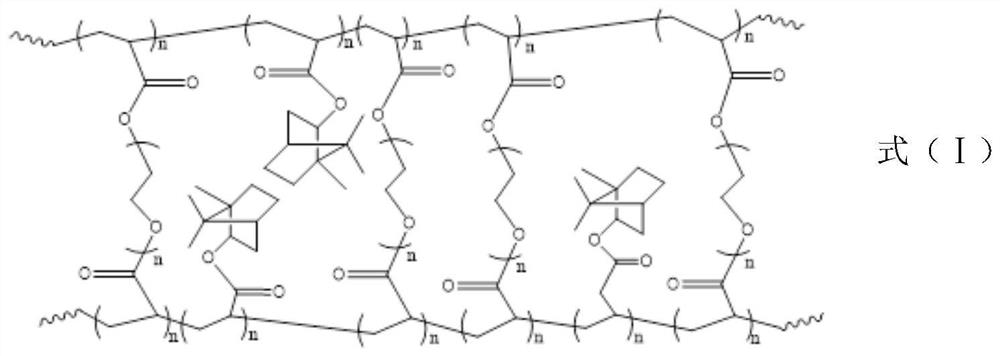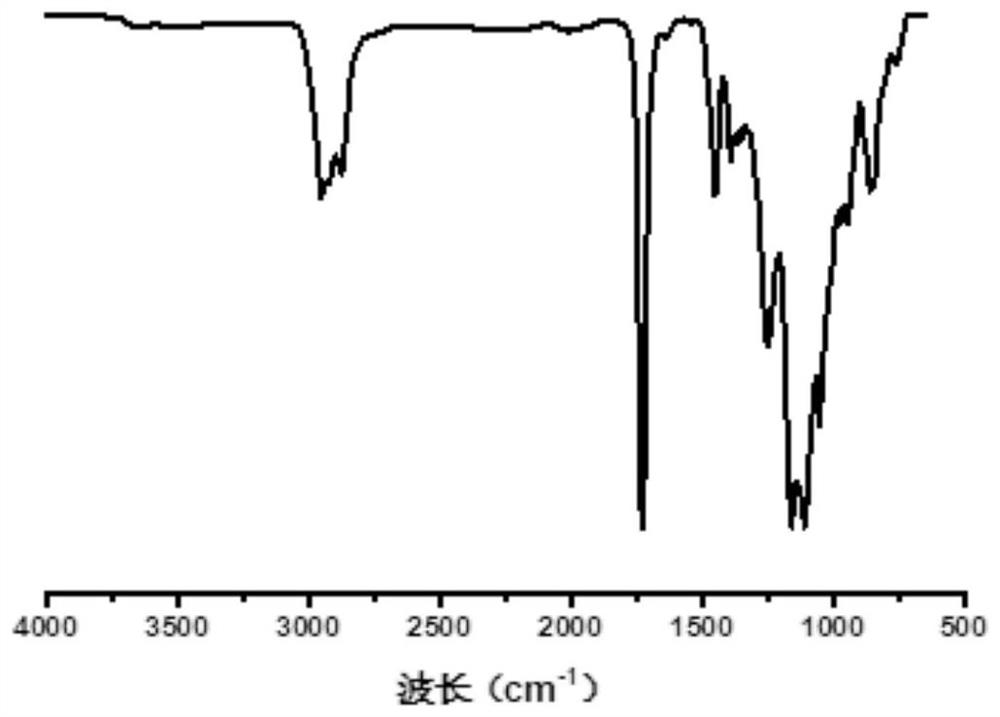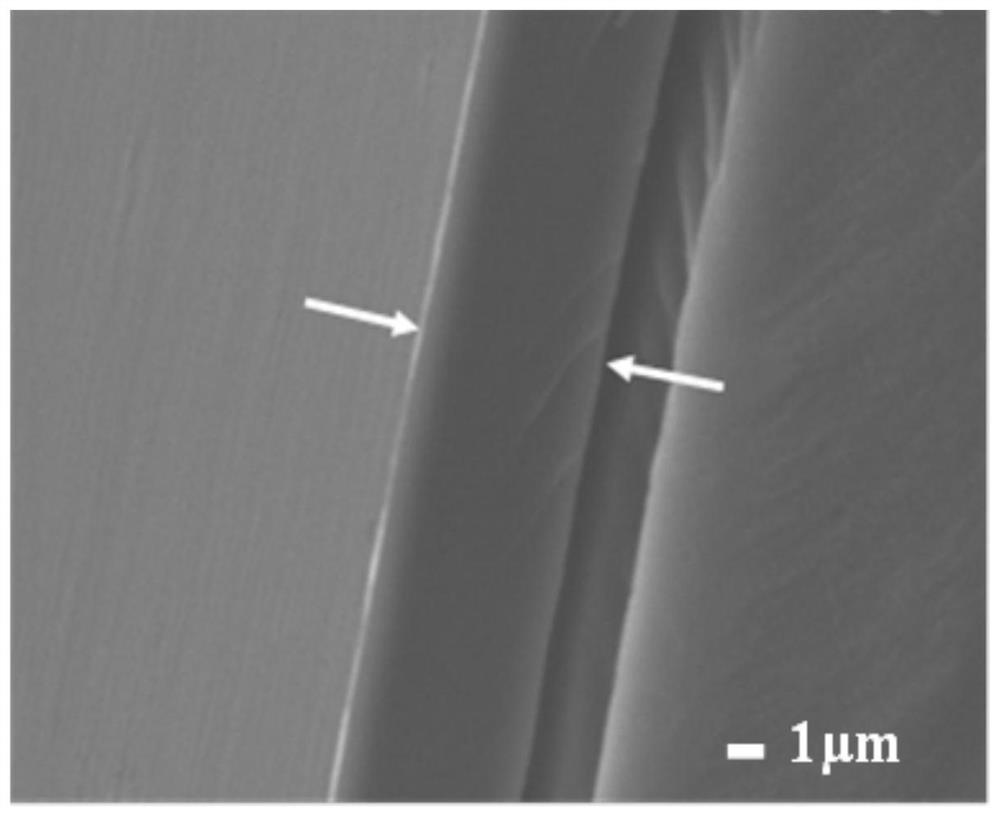Non-release type antimicrobial adhesion coating as well as preparation method and application thereof
An anti-microbial and coating technology is applied in the field of non-release anti-microbial adhesion coating and its preparation, which can solve the problems of inability to achieve anti-bacterial properties on the surface of modified materials, complicated operation steps and high reactivity, and achieve good anti-microbial adhesion. , The preparation method is simple, and the effect of preventing the adhesion of microorganisms
- Summary
- Abstract
- Description
- Claims
- Application Information
AI Technical Summary
Problems solved by technology
Method used
Image
Examples
Embodiment 1
[0101] Grafted PBA-PPEGDA coating preparation of polyacrylonitrile membrane:
[0102] (1) Solution preparation
[0103] Preparation of photoinitiator solution: Weigh 4.2300g of isopropylthioxanthone and 0.6066g of benzophenone in a brown sample bottle, then add 10mL of acetone, vortex, ultrasonic 20min to fully dissolve it, and finally dissolve it Nitrogen blowing apparatus (ND400, Hangzhou Ruicheng Instrument Co., Ltd.) was used to bubble for 20 minutes to fully remove oxygen to obtain a photoinitiator solution.
[0104] Preparation of monomer solution: After mixing 2.08mL BA and 2.00mL PEGDA (relative molecular weight 200) (the molar ratio of BAP to PEGDA is 1:1), draw 0.8mL mixed monomer and 0.2mL acetone into a brown sample Ultrasonic treatment was carried out in the bottle, and then deoxygenated by nitrogen gas for 20 minutes to obtain a monomer solution.
[0105] (2) Preparation of photoinitiator-modified polyacrylonitrile film
[0106] Soak the polyacrylonitrile memb...
Embodiment 2
[0132] Embodiment 2: the grafting PBA-PPEGDA coating preparation of polyethylene film:
[0133] (1) Solution preparation
[0134] Preparation of photoinitiator solution: Weigh 2.5400g of isopropylthioxanthone and 1.8220g of benzophenone in a brown sample bottle, then add 10mL of acetone, vortex, ultrasonic 20min to fully dissolve it, and finally dissolve it Bubble for 20 minutes with a nitrogen blower to fully remove oxygen to obtain a photoinitiator solution.
[0135] Preparation of monomer solution: After mixing 2.08mLBA and 4.00mL PEGDA (relative molecular weight 400) (the molar ratio of BAP to PEGDA is 1:1), draw 0.65mL of mixed monomer and 0.35mL of acetone into a brown sample bottle Ultrasonic treatment was performed, followed by deoxygenation with nitrogen gas for 20 min to obtain a monomer solution.
[0136] (2) Preparation of photoinitiator-modified polyethylene film
[0137] Soak the polyethylene film in acetone for 10 h, and ultrasonically remove impurities for 3...
Embodiment 3
[0175] Grafted PBA-PPEGDA coating preparation of polyethylene terephthalate film:
[0176] (1) Solution preparation Preparation of photoinitiator solution: Weigh 0.84g isopropylthioxanthone and 3.0333g benzophenone in a brown sample bottle, then add 10mL acetone, vortex, ultrasonic 20min to make it fully Dissolve it, and finally bubble it with a nitrogen blower for 20 minutes to fully remove oxygen to obtain a photoinitiator solution.
[0177] Preparation of monomer solution: Mix 1.56mLBA, 2.50mL PEGDA (relative molecular weight 1000) (the molar ratio of BAP to PEGDA is 3:1) and ultrasonically dissolve it evenly, then draw 0.5mL mixed monomer and 0.5mL acetone into a brown sample Ultrasonic treatment was carried out in the bottle, and the oxygen was removed by passing nitrogen gas for 20 minutes to obtain a monomer solution.
[0178] (2) Preparation of photoinitiator-modified polyethylene terephthalate film
[0179] Soak the polyethylene terephthalate film in ethanol for 10 ...
PUM
| Property | Measurement | Unit |
|---|---|---|
| concentration | aaaaa | aaaaa |
| grafting efficiency | aaaaa | aaaaa |
| grafting efficiency | aaaaa | aaaaa |
Abstract
Description
Claims
Application Information
 Login to View More
Login to View More - R&D
- Intellectual Property
- Life Sciences
- Materials
- Tech Scout
- Unparalleled Data Quality
- Higher Quality Content
- 60% Fewer Hallucinations
Browse by: Latest US Patents, China's latest patents, Technical Efficacy Thesaurus, Application Domain, Technology Topic, Popular Technical Reports.
© 2025 PatSnap. All rights reserved.Legal|Privacy policy|Modern Slavery Act Transparency Statement|Sitemap|About US| Contact US: help@patsnap.com



